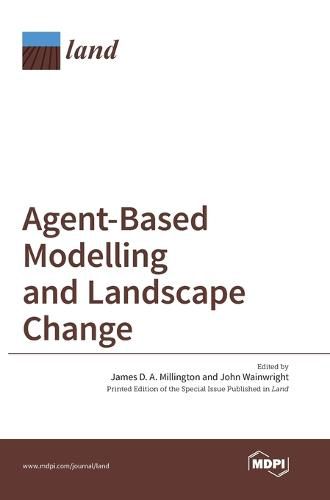Readings Newsletter
Become a Readings Member to make your shopping experience even easier.
Sign in or sign up for free!
You’re not far away from qualifying for FREE standard shipping within Australia
You’ve qualified for FREE standard shipping within Australia
The cart is loading…






This title is printed to order. This book may have been self-published. If so, we cannot guarantee the quality of the content. In the main most books will have gone through the editing process however some may not. We therefore suggest that you be aware of this before ordering this book. If in doubt check either the author or publisher’s details as we are unable to accept any returns unless they are faulty. Please contact us if you have any questions.
The use of agent-based models (ABMs) and modelling for understanding landscape change and dynamics continues to grow. One reason for the popularity of ABMs is that they provide a framework to represent multiple, discrete, multi-faceted, heterogeneous actors (human or otherwise) and their relationships and interactions between one another and their environment, through time and across space. This collection showcases innovative uses of ABMs for investigating and explaining landscape change and dynamics and to explore and identify how researchers in different disciplines can learn from one another to further innovate. The diverse range of processes and landscapes that ABMs are currently used to examine is clearly demonstrated, including: land-use decision making in agricultural landscapes; soil erosion in semi-arid environments; forest change in mountainous landscapes; trade in 1st Century BC southern France; social adaptations of herders in northern Mongolia; and malaria epidemiology in Kenya. A range of agent-based representation is used from the implied presence of agents, through comparing heterogeneous vs. aggregated representation of human activity, to alternative means of parameterizing individual agent behaviour. The collection will be of interest to all interested in innovative agent-based modelling for understanding landscape change, its causes and consequences for sustainability in the Anthropocene.
$9.00 standard shipping within Australia
FREE standard shipping within Australia for orders over $100.00
Express & International shipping calculated at checkout
This title is printed to order. This book may have been self-published. If so, we cannot guarantee the quality of the content. In the main most books will have gone through the editing process however some may not. We therefore suggest that you be aware of this before ordering this book. If in doubt check either the author or publisher’s details as we are unable to accept any returns unless they are faulty. Please contact us if you have any questions.
The use of agent-based models (ABMs) and modelling for understanding landscape change and dynamics continues to grow. One reason for the popularity of ABMs is that they provide a framework to represent multiple, discrete, multi-faceted, heterogeneous actors (human or otherwise) and their relationships and interactions between one another and their environment, through time and across space. This collection showcases innovative uses of ABMs for investigating and explaining landscape change and dynamics and to explore and identify how researchers in different disciplines can learn from one another to further innovate. The diverse range of processes and landscapes that ABMs are currently used to examine is clearly demonstrated, including: land-use decision making in agricultural landscapes; soil erosion in semi-arid environments; forest change in mountainous landscapes; trade in 1st Century BC southern France; social adaptations of herders in northern Mongolia; and malaria epidemiology in Kenya. A range of agent-based representation is used from the implied presence of agents, through comparing heterogeneous vs. aggregated representation of human activity, to alternative means of parameterizing individual agent behaviour. The collection will be of interest to all interested in innovative agent-based modelling for understanding landscape change, its causes and consequences for sustainability in the Anthropocene.